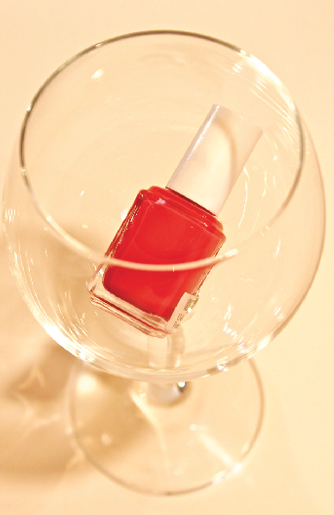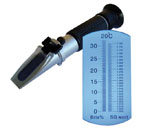
Did you ever create a wine that seemed more viscous than your typical wine, or which may have exhibited heavier fruity odors, or perhaps a solvent-like smell?
The culprits may well be higher alcohols, also called fusel oils; all wines contain some at various concentrations. Higher alcohols in small concentrations can contribute positive aromatic characteristics to wine; however, at high levels they can impart off-aromas or mask other aromas, or change the texture and mouthfeel.
So, what are higher alcohols exactly? Where do they come from? What’s with the Jekyll-and-Hyde behavior? And most important for us winemakers, how can we control their production?
The chemistry of higher alcohols
As is the case with all alcohols, including ethanol (which is the primary alcohol in wine, beer and distilled spirits), higher alcohols have a special functional group called a hydroxyl (OH) group that defines their chemical be-havior. The main difference lies in the number of carbon atoms in their molecular structure.
Ethanol has the chemical formula C2H6O (also written as C2H5OH) and so it has two carbon atoms. Higher alcohols are defined as containing more than two carbon atoms. For practical purposes, it is best to consider higher alcohols as those having four to ten carbon atoms. What this means in practical terms is that higher alcohols have higher boiling points (are less volatile), and consequently, they have fairly high detection thresholds.
You would need relatively high levels to be able to detect these in wine. Generally, these are not a problem, and so, detection of higher alcohols can point to some unusual vinification problems — and the root cause is not always obvious.
A great way to train your nose to detect higher alcohols is to first smell a wine, then smell different kinds of distilled spirits, such as grappa (my favorite … for drinking), whiskey, gin, and then add one spirit to one glass of the same wine and see how the aromas change. Then repeat with the other spirits. Distilled spirits have much higher concentrations of higher alcohols, so they can be great tools to acquire experience.
The greater danger with higher alcohols in wine is that they can become esterified into much more odiferous compounds detectable at much lower concentrations; more on this below.
Sources of higher alcohols
Higher alcohols mainly derive from a series of complex reactions in S. cerevisiae yeast metabolism using sugars and amino acids as substrates. The metabolic sequence culminates into aldehydes that are then transformed (the technical term is “reduced”) into these alcohols. A deficiency of nitrogen during fermentation can exacerbate their production.
Just like our own bodies need amino acids for biological functions, so does yeast. Yeasts need amino acids as a source of nitrogen, to build proteins and to support the many cell functions necessary for growth, reproduction and survival.
Concentrations of these amino acid precursors have the greatest impact on the extent of higher alcohol production; however, yeast strain, nitrogen availability, oxygen availability and the level of aeration, ethanol concentration, fermentation temperature, pH and composition of the grape must, level of solids, grape variety, maturity and skin contact time all can affect the production of higher alcohols. That’s a lot to juggle although high fermentation temperature is the most common cause of higher alcohol production. Excessive calcium has also been linked to increased levels of higher alcohols by interfering with magnesium’s ability in supporting cellular functions in yeast metabolism. Calcium and magnesium are only two of a number of important minerals key to cell functions, particularly in regulating pH.
What’s all the stink about?
Common higher alcohols and their aroma descriptors in parenthesis include propanol (pungent, alcohol), butanol (fusel, spirituous), isoamyl alcohol (harsh, nail polish), hexanol (green, grass), 2-phenylethanol (floral, rose), and methionol (cooked cabbage). Of these, hexanol and methionol have the lowest detection threshold, in the order of 1–4 ppm; propanol is two orders of magnitude higher at around 500 ppm.
Propane-1,3-diol is a higher alcohol partly responsible for increased viscosity. It is a by-product of the heat-catalyzed enzymatic degradation of glycerol by some species of Lactobacillus, a lactic acid bacteria involved mainly in spoilage. You will recall that glycerol is a colorless and odorless, viscous, sweet-tasting liquid and the third most abundant compound in wine (after water and ethanol). It is also produced proportionately to the amount of glucose converted into ethanol during fermentation.
Since aldehydes can result in higher alcohols from yeast metabolism, it can be expected that aldehyde precursors in wines too can be reduced. Aldehyde precursors result from the oxidation of naturally occurring fatty acids (lipids) as soon as grapes are crushed. Fatty acids, such as triglycerides, play an important role as a source of energy required in cell metabolism. Higher alcohols from aldehyde precursors include hexanol, which we have already encountered above, 3-hexen-1-ol, which increases viscosity and adds aromas of freshly cut grass, and 2-hexen-1-ol, which also imparts green, leafy aromas but also contributes fruity, unripe banana odors.
Several other higher alcohols have also been reported in the literature and resulting from malolactic fermentation (MLF) by different strains of O. oeni bacteria. These were found to have no impact in wines at the low concentrations detected in the lab.
Esters
Esters are important compounds responsible for aromas in things such as fruits, for example. And there is a plethora of esters in wine responsible for all those fruity aromas, many of which are the result of fermentation (i.e. microbiological) and post-fermentation (chemical) reactions. Many esterification reactions consist of combining an alcohol with an organic acid. Despite esters being present in wine at very low concentrations, they have a relatively high solubility in water and alcohol and have a high volatility. Their olfactory detection thresholds are in the range of 0.01–1 ppm, i.e. up to two orders of magnitude lower than hexanol.
The two general classes of esters in wine are ethyl esters (formed from combining ethanol with an organic acid) and acetate esters (which are combinations of an alcohol with acetic acid). Higher alcohols from yeast metabolism only give rise to acetate esters. Many of these esters have pleasant fruity smells at low concentrations but it is when these esters begin to show up at high concentrations that our olfactory system perceives them as off-putting.
Ethyl esters are mainly responsible for fruity aromas, such as strawberry, banana, green apple, pineapple and lemon, as well as some floral nuances. Acetate esters also impart similar fruity and floral aromas, but some undesirable ones can impart balsamic or solvent smells or, in the worst case, a smell of nail-polish remover or glue caused by ethyl acetate, the most common ester in wine. Most of us are familiar with the repulsive smell of ethyl acetate, when present at concentrations above 100 mg/L (ppm), resulting from advanced oxidation reactions. Other familiar acetates of higher alcohols include isoamyl acetate, which impart a banana odor, and phenylethanol acetate, which adds rose-like aromas.
Controlling higher alcohol production
As we’ve seen, there is a long list of factors that may cause the formation of higher alcohols in wine, making their control a challenge. Higher alcohols are best managed through sound vinification practices that favor desirable higher alcohols while limiting undesirable ones. Here is a review of specific vinification practices towards achieving those objectives.
In white winemaking, let the must clarify by natural sedimentation during the juice settling phase before inoculation. Over-fining or filtering the must can remove peptides (proteins), amino acids and fatty acids critical to good fermentation kinetics.
Choose a suitable yeast strain for your varietal and desired wine style. Strains produce varied levels of higher alcohols and esters, some of which may not be suitable for some varietals. Each cultured S. cerevisiae yeast strain has been isolated and developed to allow specific grape varieties to express their full, individual organoleptic characteristics for a desired style of wine by favoring production of esters, compatible higher alcohols and other volatile compounds. Consult the yeast manufacturer’s data.
Supplement the must’s natural nitrogen content by adding nutrients to the yeast during rehydration and then to the wine while fermenting. Choose nutrients that include amino acids and vitamins. Be careful not to add excessive amounts as it may result in the opposite effect, i.e. increased levels of higher alcohols along with higher levels of volatile sulfur compounds, ethyl acetate and acetic acid — not a good list of compounds to have in your wine. Follow specific product instructions.
Ferment reds at temperatures in the range 77-86 °F (25-30 °C) without ever exceeding the maximum, and introduce oxygen by aerating the fermenting wine. Ferment whites at cooler temperatures, in the range 50-68 °F (10-20 °C), and avoid excessive oxygen exposure.
If you know your water is hard and has high calcium levels, use a water softener to process water for rehydrating yeast and dissolving additives, such as fining agents and other processing aids, or for adding water to dilute a high-Brix must. You can quickly determine if your water is hard by pouring a small amount of liquid soap — not detergent — and some water in a flask or closed container and shake vigorously, or alternatively, rub your hands with a bar of soap under running water. The soap should foam easily; otherwise, the water is hard.
The ideal pH range for fermenting wine is 3.2-3.6. Fermenting outside this range may not pose an immediate risk, however, if any other unfavorable factors are present, such as high temperature, then the risk increases significantly. Eliminate any risk factor that may increase acetic acid production and volatile acidity. This means choosing a yeast strain with low volatile acidity (VA) production, and protecting wine from fruit flies and Acetobacter.
If you follow sound winemaking practices with a watchful eye on fermentation progress, you should never have to worry about higher alcohols, but now you have the knowledge to spot problems readily.







